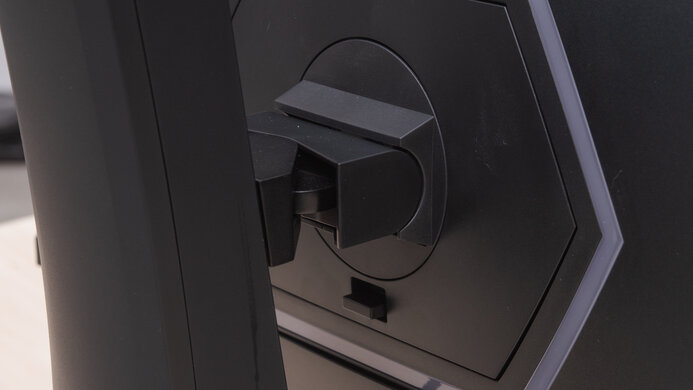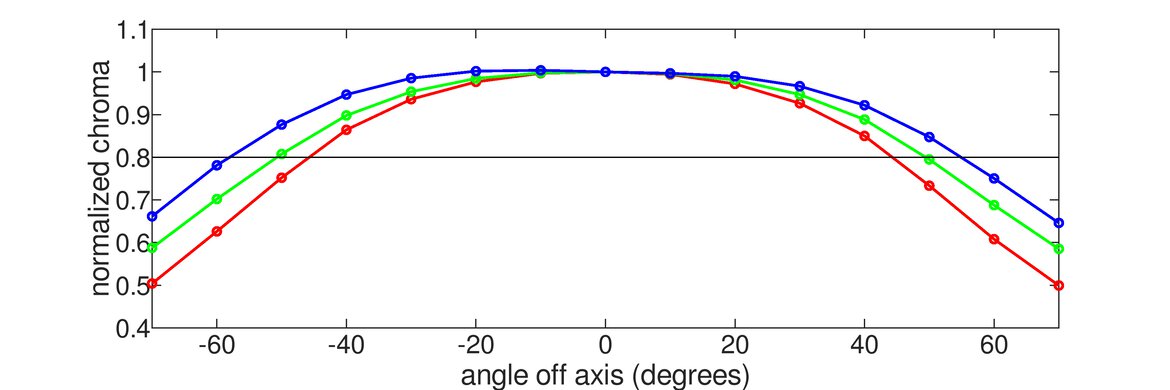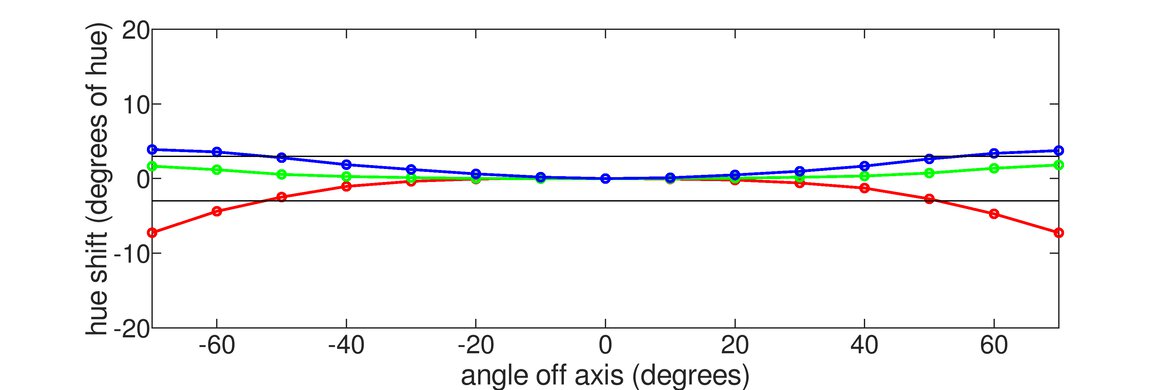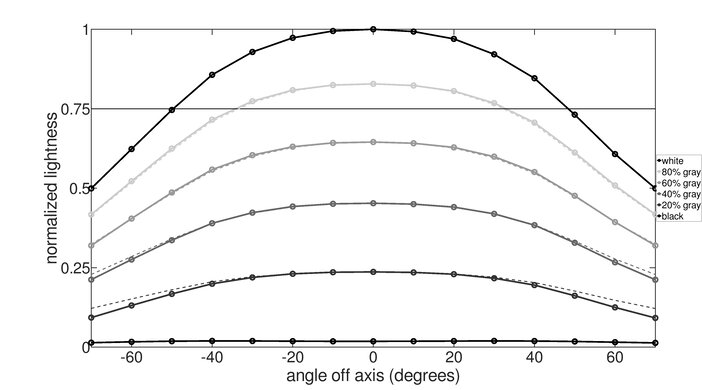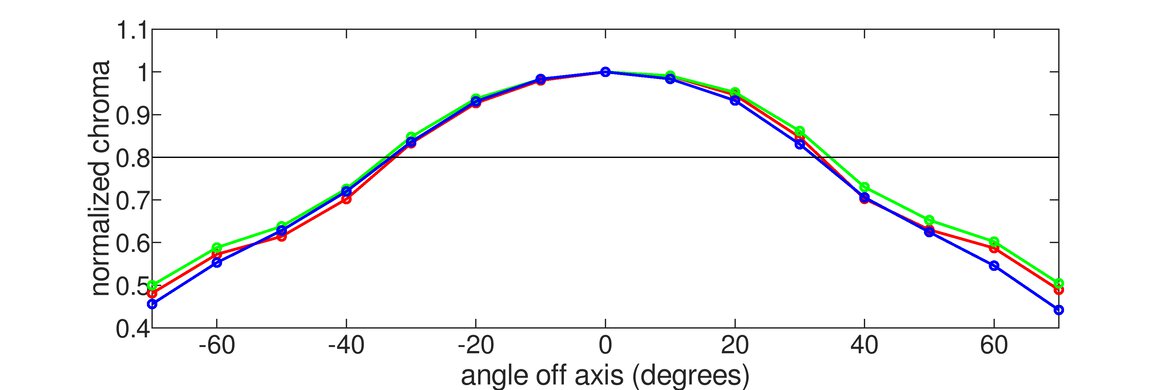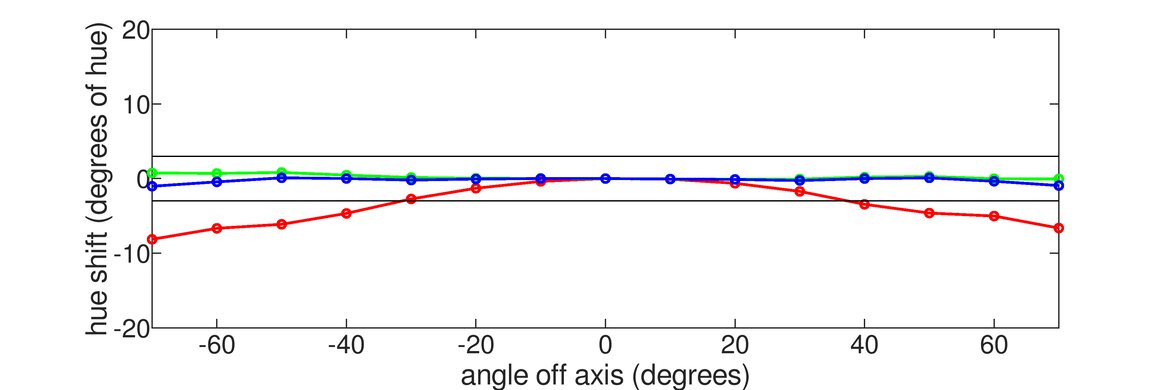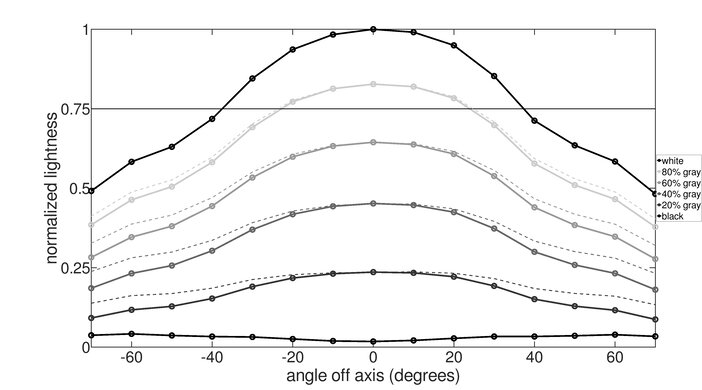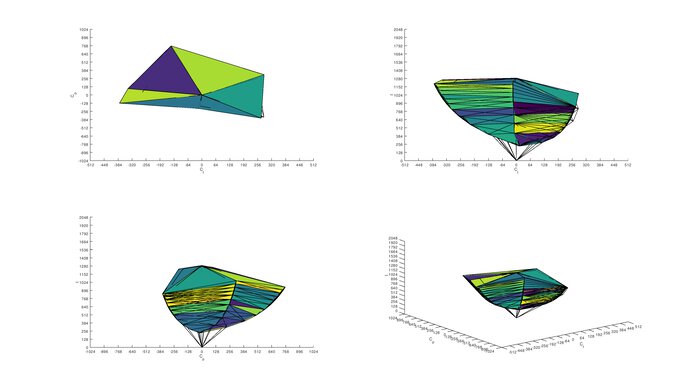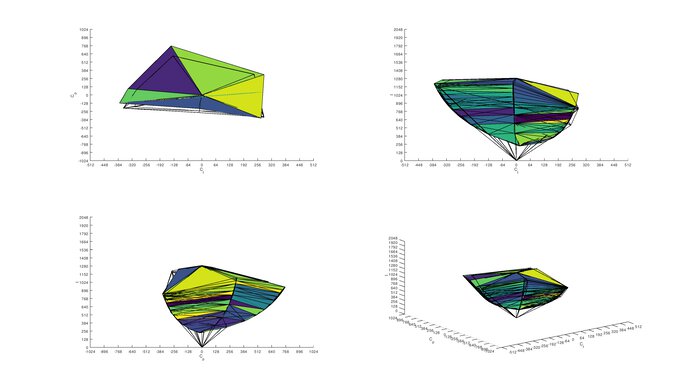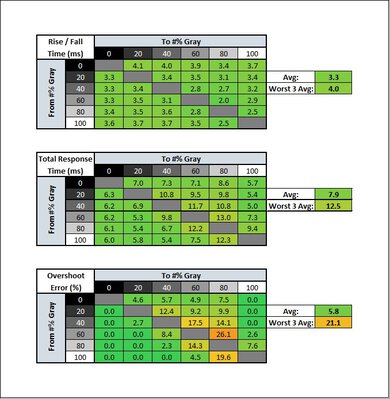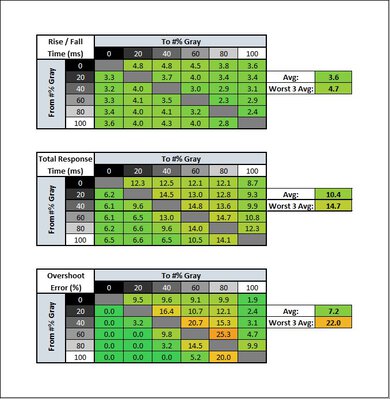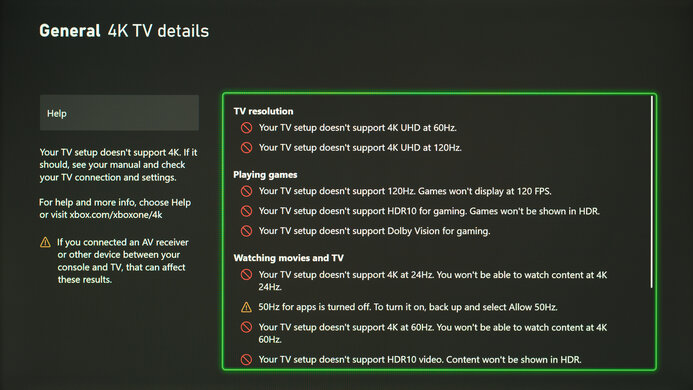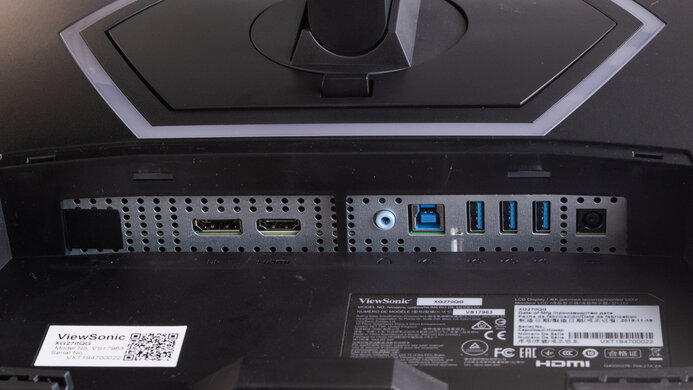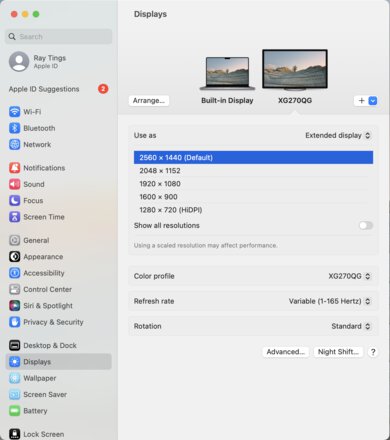The ViewSonic Elite XG270QG is a good overall 27-inch, 1440p monitor that performs best as a gaming monitor. It has a native refresh rate of 144Hz that you can easily overclock to 165Hz. The response time is excellent, so there's little blur trail behind fast-moving objects, and the input lag is incredibly low, giving you a responsive gaming experience. It also supports G-SYNC variable refresh rate (VRR) technology to reduce screen tearing, which is only available through a DisplayPort connection. As with most IPS panels, it can't produce deep blacks and has poor black uniformity, but it has wide viewing angles. Unfortunately, it doesn't support HDR and has bad out-of-the-box color accuracy, but in SDR, it can get bright and has an outstanding color gamut, displaying a wide range of colors.
Our Verdict
The ViewSonic Elite XG270QG is a good monitor for most uses. It performs best as a gaming monitor thanks to its G-SYNC VRR support, incredibly low input lag, and excellent response time, resulting in clear motion. Its 27-inch, 1440p screen is good for opening multiple windows at once while working, and it can get bright and has great reflection handling. Unfortunately, with an IPS panel, it doesn't perform well in dark rooms due to the low contrast ratio and poor black uniformity, but luckily, it has wide viewing angles if you want to share your screen with others.
- Excellent response time.
- Incredibly low input lag.
- Great reflection handling.
- Bad out-of-box color accuracy.
- Can't produce deep blacks.
The ViewSonic Elite XG270QG is good for office use. Its 27-inch screen offers plenty of space, and the 1440p resolution favors multitasking. It has great viewing angles if you need to share your screen with a coworker. Unfortunately, it has bad out-of-box color accuracy, so you likely need to calibrate it. Luckily, it can get bright and has great reflection handling, meaning you can place it in most bright office environments.
- Excellent response time.
- Incredibly low input lag.
- Great reflection handling.
- Bad out-of-box color accuracy.
- Can't produce deep blacks.
The ViewSonic Elite XG270QG is a good gaming monitor. You can overclock its native refresh rate to 165Hz, and it supports G-SYNC VRR over a DisplayPort connection to reduce screen tearing. Its response time is excellent, resulting in clear motion, and the input lag is incredibly low for a responsive gaming experience. It's not the best choice for dark room gaming since it has a low contrast ratio and poor black uniformity.
- Excellent response time.
- Incredibly low input lag.
- Great reflection handling.
- Bad out-of-box color accuracy.
- Can't produce deep blacks.
The ViewSonic Elite XG270QG is okay for multimedia. The high resolution allows you to watch your favorite videos online in great detail and has wide viewing angles for sharing your screen with a friend. Unfortunately, it can't produce deep blacks and it doesn't support HDR. However, it gets bright and has good ergonomics, so you can place it in a position you like.
- Excellent response time.
- Incredibly low input lag.
- Great reflection handling.
- Bad out-of-box color accuracy.
- Can't produce deep blacks.
The ViewSonic Elite XG270QG is decent for media creation. The high resolution and screen size favor multitasking, and the stand allows you to place the monitor how you like. It has excellent coverage of the Adobe RGB color space used in photo editing but can't produce deep blacks due to its low contrast ratio.
- Excellent response time.
- Incredibly low input lag.
- Great reflection handling.
- Bad out-of-box color accuracy.
- Can't produce deep blacks.
The ViewSonic Elite XG270QG doesn't support HDR.
Changelog
- Updated Feb 20, 2023: Added text in the macOS Compatibility and Console Compatibility boxes and clarified text throughout as part of Test Bench 1.2.
- Updated Feb 17, 2023: Updated to Test Bench 1.2, resulting in changes to the results and scores with the Response Time and Input Lag. Added tests for Console Compatibility and macOS compatibility and made minor changes to other tests, which you can see in our Changelog.
- Updated Jun 17, 2020: G-SYNC was mistakenly identified as compatible, not native.
- Updated Jun 03, 2020: We retested the monitor for FreeSync compatibility because of NVIDIA's Adaptive Sync.
Check Price
Differences Between Sizes And Variants
We tested the 27-inch ViewSonic Elite XG270QG. A 1080p version with a higher refresh rate is available, and you can see the differences below.
| Model | Size | Resolution | Refresh Rate |
|---|---|---|---|
| ViewSonic Elite XG270QG | 27" | 1440p | 165Hz |
| ViewSonic Elite XG270 | 27" | 1080p | 240Hz |
If someone comes across a different type of panel or their ViewSonic Elite XG270QG doesn't correspond to our review, let us know and we'll update the review. Note that some tests, like the gray uniformity, may vary between individual units.
Our unit of the ViewSonic Elite XG270QG was manufactured in November 2019, and you can see the label here.
Popular Monitor Comparisons
The ViewSonic Elite XG270QG is a good overall 1440p, 165Hz monitor with amazing gaming performance, but it doesn't stand out against similar monitors.
See also our recommendations for the best gaming monitors, the best 1440p monitors, and the best 27-inch monitors.
The ViewSonic Elite XG270 and the ViewSonic Elite XG270QG have similar performance but have some different features. The XG270 has a 1080p screen and 240Hz refresh rate and it supports HDR, while the XG270QG has a 1440p resolution and 165Hz refresh rate. The XG270 has much better out-of-box color accuracy, slightly better reflection handling, and better response time at 60Hz. The XG270QG has much better black uniformity, a better SDR color gamut, and quicker response time at its max refresh rate.
The LG 27GL850-B/27GL83A-B and the ViewSonic Elite XG270QG are two similar-performing monitors. The ViewSonic has a max refresh rate of 165Hz, G-SYNC support, a black frame insertion feature to help reduce motion blur, and better ergonomics. The LG supports HDR and has much better out-of-box color accuracy. Even though the LG has a max refresh rate of 144Hz, the two monitors still have a very similar response time, except the LG is quicker at 60Hz.
The ASUS ROG Swift PG279Q and the ViewSonic Elite XG270QG are two very similar monitors. Both have 1440p, 165Hz, IPS panels with native G-SYNC support. The ViewSonic has a better response time at 60Hz, better reflection handling, and a wider color gamut in SDR. The ASUS has much better out-of-the box color accuracy, better ergonomics, and a better contrast ratio.
The ViewSonic Elite XG270QG and the ASUS ROG Swift PG279QZ are very similar in terms of performance. Both are 27 inch, 1440p, 165Hz monitors with native G-SYNC support and no HDR support. The ViewSonic can get brighter, it has a better SDR color gamut and much faster response time at 60Hz. The ASUS has a better contrast ratio, slightly better viewing angles, and much better out-of-box color accuracy.

We buy and test more than 30 monitors each year, with units that we buy completely on our own, without any cherry-picked units or samples. We put a lot into each unbiased, straight-to-the-point review, and there's a whole process from purchasing to publishing, involving multiple teams and people. We do more than just use the monitor for a week; we use specialized and custom tools to measure various aspects with objective data-based results. We also consider multiple factors before making any recommendations, including the monitor's cost, its performance against the competition, and whether or not it's easy to find.
Test Results

The design of the ViewSonic Elite XG270QG is exactly like the ViewSonic Elite XG270. The entire monitor is matte black, there's RGB lighting on the back, and you can add the anti-glare panels pictured above if you wish. The stand has a unique design that lays flat.
This monitor has great ergonomics. You can adjust it however you like and switch it into portrait mode in either direction. If ergonomics are really important to you, the ASUS TUF VG27AQ is a similar monitor with much better ergonomics.
The back of the monitor has RGB lighting, and there's cable management through the stand. It has a quick-release button if you need to VESA mount it. There's also a headphone hook and a mouse bungee to hang your peripherals when you're not gaming.
The measurement of the housing width includes the flaps at a 90-degree angle, and without them, the width of the display is 24.2" (61.4 cm). With the flaps extended out, the width is 34.9" (88.7 cm).
As with most IPS panels, the contrast ratio is disappointing, and blacks look gray when viewed in the dark. If you're looking for a similar monitor with a VA panel for better contrast, check out the LG 32GK850G-B.
Note: The contrast was measured post-calibration, and it was better pre-calibration, but that makes the colors a lot less accurate.
The ViewSonic Elite XG270QG doesn't have a local dimming feature. The video above is provided for reference only.
The ViewSonic Elite XG270QG has good SDR peak brightness. There's no variation in content and it's bright enough to overcome glare in most rooms. Measurements were taken after calibration on the 'Custom 1' mode with Brightness set to 'Max'. The display was a bit brighter pre-calibration, but that makes the colors a lot less accurate.
This monitor doesn't support HDR.
As with most IPS panel monitors, the ViewSonic XG270QG has a great horizontal viewing angle. The image remains accurate when viewed from the side, so it's easy to share your screen with others.
It has a decent vertical viewing angle. It's better than the ViewSonic Elite XG270, but you still lose some image accuracy if it's mounted above eye level or if you sit close to the screen.
It has poor black uniformity. There's visible clouding throughout and some backlight bleed at the bottom and top right corner. It's much improved over the ViewSonic Elite XG270, but this could be due to panel variance.
The accuracy before calibration is poor. Nearly all colors are inaccurate, and the white balance is noticeably off. Luckily, the gamma does a decent job following the target curve, and the color temperature is close to the 6500K target. Even though this is with its sRGB picture mode, colors aren't locked to the sRGB color space, but they're at least less oversaturated than on other modes.
The ViewSonic Elite XG270QG has amazing post-calibration color accuracy. Most colors are accurate, the color temperature is extremely close to the 6500K target, and the gamma follows the target fairly well.
It has an outstanding SDR color gamut. It covers all of the sRGB color space used in most content and has excellent coverage of the Adobe RGB color space used in photo editing. It's much better than the ViewSonic Elite XG270 and the ASUS TUF VG27AQ.
The ViewSonic Elite XG270QG has an outstanding color volume. It can display a wide range of colors at different brightness levels but can't produce dark, saturated colors due to its low contrast ratio.
This monitor doesn't support HDR.
This monitor doesn't support HDR.
It has great gradient handling, but there's some banding in darker shades. The manufacturer advertises the ViewSonic Elite XG270QG as 10-bit, but it's 8-bit + FRC. When trying to display a 10-bit image, this happened.
You need a DisplayPort connection to take full advantage of this monitor, as its HDMI port is limited to HDMI 1.4 bandwidth.
Both FreeSync and G-SYNC compatibility work over the monitor's entire refresh rate range but only over a DisplayPort connection.
| Overdrive Setting | Response Time Chart | Response Time Tables | Motion Blur Photo |
| Standard | Chart | Table | Photo |
| Advanced | Chart | Table | Photo |
| Ultra Fast | Chart | Table | Photo |
The response time at its max refresh rate of 165Hz is excellent. Motion looks smooth, and the recommended 'Standard' overdrive setting has minimal overshoot.
| Overdrive Setting | Response Time Chart | Response Time Tables | Motion Blur Photo |
| Standard | Chart | Table | Photo |
| Advanced | Chart | Table | Photo |
| Ultra Fast | Chart | Table | Photo |
The response time at 120Hz is great. It performs similarly to its max refresh rate, and once again, the recommended overdrive setting is 'Standard'.
| Overdrive Setting | Response Time Chart | Response Time Tables | Motion Blur Photo |
| Standard | Chart | Table | Photo |
| Advanced | Chart | Table | Photo |
| Ultra Fast | Chart | Table | Photo |
The ViewSonic Elite XG270QG has a good response time at 60Hz. There's less overshoot than with higher refresh rate signals, but that's because the overall response time is slower, leading to some motion blur.
This monitor has an optional backlight strobing feature, also known as black frame insertion, to reduce persistence blur. You can control the pulse width of it; you can see the different settings below. However, the timing is off, resulting in image duplication.
| BFI Setting | Motion Blur Photo |
| 0 | Photo |
| 50 | Photo |
| 100 | Photo |
It has incredibly low input lag, especially at its native resolution. It stays low with VRR enabled, but there's a bit more lag than normal with a 60Hz refresh rate. The ASUS TUF VG27AQ has a much better input lag at 60Hz.
The 27-inch, 1440p screen offers plenty of screen real estate and is great for multitasking or for seeing more details in your game.
The ViewSonic XG270QG only has one HDMI 1.4 input compared to two HDMI 2.0 inputs on the ViewSonic Elite XG270.
The ViewSonic Elite XG270QG works well with macOS. VRR works across its entire range, and there isn't flickering with most content, but there's some when playing a game and changing between different scenes and menus that cause a big drop in the frame rate. Like most monitors that require a DisplayPort to USB-C cable, windows return to their original position when waking a MacBook up from sleep, but not when you reopen the lid.
The ViewSonic XG270QG has a few extra features, including:
- RGB Illumination: A hexagon on the back whose RGB lighting could be customized through the on-screen display.
- Blue Light Filter: Blue light suppression to reduce eye strain.
- Crosshair: Puts a crosshair on the screen for shooter games.
- Eco Mode: Limits some features to save energy.



